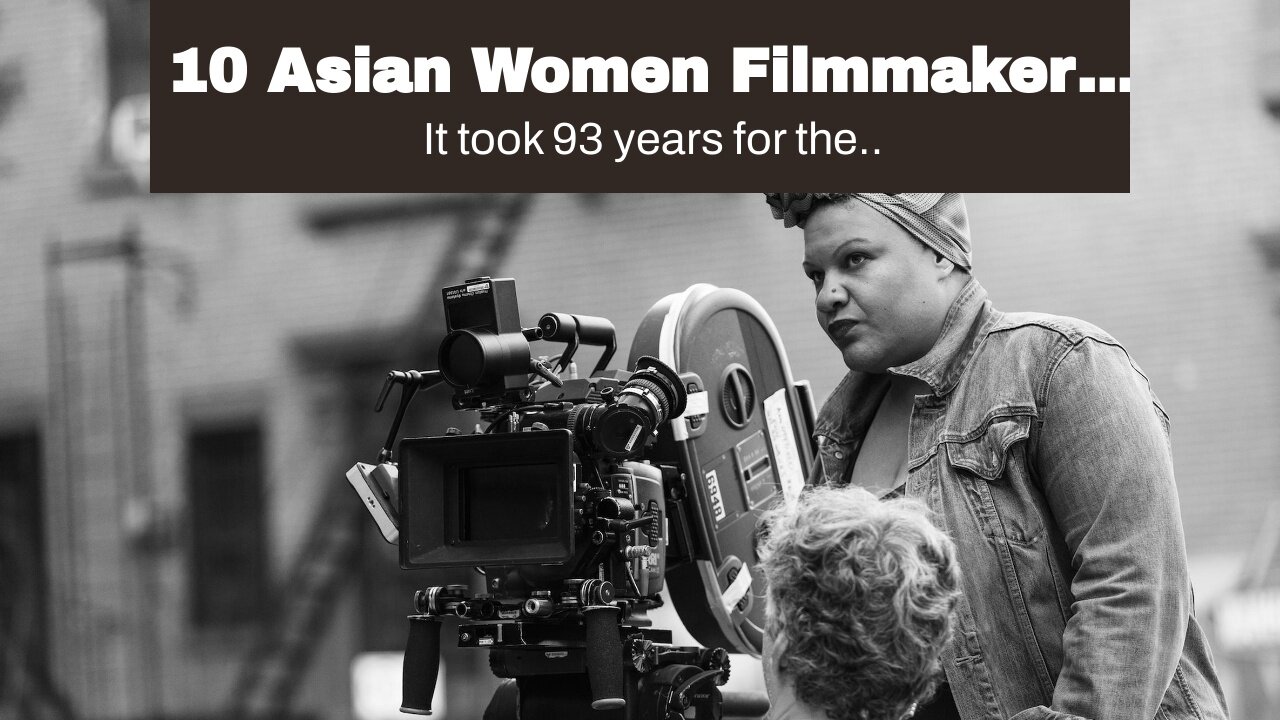Premium Only Content

10 Asian Women Filmmakers Who Paved the Way for Other Asian Film Talent
10 Asian Women Filmmakers Who Paved the Way for Other Asian Film Talent
It took 93 years for the Academy to name an Asian woman (and first woman of color) as Best Director when Chloé Zhao took home the 2021 Academy Award for the critically acclaimed Nomadland . Before Zhao made history, director Domee Shi became the first woman of color to win a best animated short Oscar for Bao in 2019; the same year, director Isabel Sandoval’s feature Lingua Franca was the first film directed and starring an openly trans woman of color to screen in competition at the Venice International Film Festival. In 2020, Awkwafina became the first Asian woman to...
It took 93 years for the Academy to name an Asian woman (and first woman of color) as Best Director when Chloé Zhao took home the 2021 Academy Award for the critically acclaimed Nomadland . Before Zhao made history, director Domee Shi became the first woman of color to win a best animated short Oscar for Bao in 2019; the same year, director Isabel Sandoval’s feature Lingua Franca was the first film directed and starring an openly trans woman of color to screen in competition at the Venice International Film Festival. In 2020, Awkwafina became the first Asian woman to win Best Actress at the Golden Globes for The Farewell , directed by Lulu Wang. And this year, Michelle Yeoh made Oscar history as the first Asian woman to win Best Actress for Everything Everywhere All at Once .
As representation has expanded in recent years for Asian women on either side of the camera, let’s look at the Asian American women film directors who have paved the way in Hollywood. Marion Wong - - The Curse of Quon Gwon (1916) (1916) Director and star Marion Wong and costar Violet Wong, 1916 (Photo by Everett) The first Asian American feature film was made in 1916 by 21-year-old Wong, who directed, wrote, produced, and starred in The Curse of the Quon Gwon: When the Far East Mingles with West . Wong cast herself as the villain, her sister-in-law Violet Wong as the hero, and her mother Chin Shee as the elder matron. The film was produced by The Mandarin Film Company — also founded by Marion Wong, who secured funding from her uncle Ben Lim. According to the July 7, 1917 issue of The Motion Picture World, the film “deals with the curse of a Chinese god that follows his people because of the Influence of western civilization.” When the film was released, Marion Wong told the Oakland Tribune, “I had never seen any Chinese movies, so I decided to introduce them to the world.”
Unfortunately, no distributors bought the film and, with no financial returns, Ben Lim declared bankruptcy. Marion Wong made no other films that we know of, and today, only two out of seven or eight nitrate reels of The Curse have survived, discovered in 2004 by filmmaker Arthur Dong. In 2006, The Curse was inducted into the United States Library of Congress’ National Film Registry. Anna May Wong My China Film (1936) Wong achieved many firsts. She was the first Chinese American movie star in Hollywood, appearing in over 60 films, with her first leading role coming in 1922’s The Toll of the Sea . In 1951, she became the first Asian American to lead an American television show, The Gallery of Madame Liu-Tsong . In 1960, a year before she died, Wong received a star on the Hollywood Walk of Fame. In 2022, Wong became the first Asian woman to appear as the face of the U.S. quarter dollar; in May of the following year, Barbie unveiled the Anna May Wong doll for AAPI Heritage Month.
Not only a trailblazing actor, Wong was also a filmmaker. In 1936, she directed and produced the documentary-like My China Film , which documents Wong’s one and only trip to China, with shots of her being fitted by a Shanghai tailor for cheongsams and viewing her ancestral village with her father. Made immediately after she was rejected for a leading role in the MGM film The Good Earth, My China Film is Wong showing the world what China looks like from a Chinese American perspective rather than through Hollywood’s exoticized lens. Roughly two decades later, on February 14, 1957, the film aired as an episode of the ABC television program Bold Journey. Christine Choy and Renee Tajima-Peña - - Who Killed Vincent Chin? (1988) (1987) Choy and Tajima-Peña directed the Oscar-nominated feature documentary about the 1982 murder of Vincent Chin, a young Chinese American engineer, by autoworker Ronald Ebens. Although Ebens confessed, he never spent a day in prison. This cri...
-
 2:25:44
2:25:44
WeAreChange
3 hours agoAliens?! Pentagon Shoots Down Iranian Mothership Drone Narrative
42K12 -
 LIVE
LIVE
The StoneZONE with Roger Stone
1 hour agoShould the January 6th Committee be Investigated? | The StoneZONE w/ Roger Stone
686 watching -
 44:34
44:34
PMG
2 hours ago $0.51 earned"Caitlin Clark Says She Has “White Privilege” Why Caitlin WHY???"
5.77K1 -
 1:06:50
1:06:50
Dr. Drew
9 hours agoRoger Ver, Jan 6ers, Ross Ulbricht: Who Should Trump Pardon First? w/ Robert Barnes & Aaron Day – Ask Dr. Drew
31.5K3 -
 11:56
11:56
Tundra Tactical
3 hours ago $1.38 earnedWas the UnitedHealthcare CEO Assassination a PSYOP?
12.1K1 -
 52:46
52:46
Sarah Westall
2 hours agoPower of Nocebo and Placebo in Health & Politics. Quantum Energy Advancements w/ Ian and Philipp
21.3K3 -
 54:59
54:59
LFA TV
23 hours agoLee Smith Discusses ‘Disappearing the President’ | Trumpet Daily 12.11.24 7PM EST
17.2K -

2 MIKES LIVE
4 hours ago2 MIKES LIVE #154 w/ Spcieal Guests, BRIANNE DRESSEN, DAN SMERIGLIO and ADAM DERITO!
9.35K -
 1:28:46
1:28:46
Redacted News
5 hours agoBREAKING! CIA DEEP STATE PLAN TO STOP TRUMP ACCELERATES WITH FALSE FLAGS TIED TO IRAN | REDACTED
154K287 -
 5:38:59
5:38:59
Dr Disrespect
9 hours ago🔴LIVE - DR DISRESPECT - FORTNITE - FIRST PERSON MODE
215K70